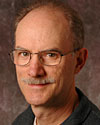
Biography - Speakers for FluoroFest 2011 - Santa Clara, California, USA
Dr. Zygmunt (Karol) Gryczynski (“Tex” Moncrief Jr. Chair & Professor of Physics, Dept. of Physics and Astronomy, TCU & Director, Center for Commercialization of Fluorescence Technologies (CCFT) Dept. of Molecular Biology and Immunology, UNTHSC)
 Dr. Zygmunt Gryczynski received his M.S. in experimental physics in 1982 from the University of Gdansk and Ph.D. in spectroscopy in 1987, working on the basic spectroscopic studies of isotropic and oriented systems of organic molecules. In 1991 he become a Research Assistant Professor in the Department of Biochemistry and Molecular Biology, University of Maryland and 1998-2005 he was an Assistant Director in the Center for Fluorescence Spectroscopy at the University of Maryland. From 2005 he is a Professor of Molecular Biology and Immunology at the University of North Texas Health Science Center at Fort Worth, Texas. In 2006 with the support from the Emerging Technology Funds (ETF) of Texas together with his colleagues he established a Center for Commercialization of Fluorescence Technologies (CCFT). In 2010 he became the “Tex” Moncrief Jr. Chair and Professor of Physic in the Department of Physics and Astronomy, Texas Christian University at Fort Worth.
Dr. Zygmunt Gryczynski received his M.S. in experimental physics in 1982 from the University of Gdansk and Ph.D. in spectroscopy in 1987, working on the basic spectroscopic studies of isotropic and oriented systems of organic molecules. In 1991 he become a Research Assistant Professor in the Department of Biochemistry and Molecular Biology, University of Maryland and 1998-2005 he was an Assistant Director in the Center for Fluorescence Spectroscopy at the University of Maryland. From 2005 he is a Professor of Molecular Biology and Immunology at the University of North Texas Health Science Center at Fort Worth, Texas. In 2006 with the support from the Emerging Technology Funds (ETF) of Texas together with his colleagues he established a Center for Commercialization of Fluorescence Technologies (CCFT). In 2010 he became the “Tex” Moncrief Jr. Chair and Professor of Physic in the Department of Physics and Astronomy, Texas Christian University at Fort Worth.Dr. Zygmunt Gryczynski, world-renown expert in the application of fluorescence spectroscopy, will present an overview of FLIM, FRET and probe development culminating in examples from current hot areas such as development of cancer diagnostics.
Dr. Richard Ludescher (Rutgers University)
 Richard D. Ludescher has had a varied academic career, studying anthropology and philosophy at the University of Iowa (B.A. '73), physical biochemistry at the University of Oregon (Ph.D. '84), and muscle biophysics at the University of Minnesota, before accepting a position in food physical chemistry in 1988 at the Department of Food Science, Rutgers University where he is currently a full professor and Dean of Academic Programs at the School of Environmental and Biological Sciences. He has used both fluorescence and phosphorescence techniques to study structure, dynamics and function of proteins and protein complexes in solution, in tissues, and in the amorphous solid state. Much of his current research involves developing novel luminescent probes of quality, stability, and safety of foods and food ingredients.
Richard D. Ludescher has had a varied academic career, studying anthropology and philosophy at the University of Iowa (B.A. '73), physical biochemistry at the University of Oregon (Ph.D. '84), and muscle biophysics at the University of Minnesota, before accepting a position in food physical chemistry in 1988 at the Department of Food Science, Rutgers University where he is currently a full professor and Dean of Academic Programs at the School of Environmental and Biological Sciences. He has used both fluorescence and phosphorescence techniques to study structure, dynamics and function of proteins and protein complexes in solution, in tissues, and in the amorphous solid state. Much of his current research involves developing novel luminescent probes of quality, stability, and safety of foods and food ingredients.Luminescence Probes of Food Quality - Luminescence probes, optical chromophores with well-defined photophysical properties, are widely used to monitor structure, function and dynamics in biological macromolecules, macromolecular complexes, and, increasingly, in cells, tissues, and whole organisms. These probes are variably sensitive to chemical and physical properties of their local environment that include pH, polarity, hydrogen bonding, viscosity and local rigidity, presence of mobile water, rotational mobility, oxygen concentration, presence of metal ions, etc. The photophysical basis for such sensitivity is complex and various while the potential of both introduced and intrinsic luminescence molecules in foods to monitor food quality, stability and safety is both extensive and underexploited. Recent work on luminescence from molecules found naturally in or routinely added to foods indicates the potential of food photonics for in situ monitoring of food quality, stability, and safety.
Dr. Isiah Warner (Louisiana State University)
 Professor Warner received his B.S. in chemistry from Southern University (Baton Rouge) in 1968. He was a research chemist with Battelle Northwest (Richland) for five years. He entered graduate school at the University of Washington in 1973 and received his Ph.D. in 1977. He was assistant professor of chemistry at Texas A&M University from 1977-82. He was awarded tenure and promoted to associate professor effective September 1982. He joined Emory University in 1982 as associate professor and was promoted to full professor in 1986. He was named Samuel Candler Dobbs Professor of Chemistry at Emory in September 1987. He was on leave to the National Science Foundation (NSF) as Program Officer for Analytical and Surface Chemistry in 1988/89. In August 1992, Dr. Warner joined Louisiana State University as Philip W. West Professor of Analytical and Environmental Chemistry. He was Chair of the Chemistry Department from July 1994-97. He was appointed Boyd Professor of the LSU System in July 2000, Vice Chancellor for Strategic Initiatives in April 2001 and Howard Hughes Medical Institute Professor in 2002.
Professor Warner received his B.S. in chemistry from Southern University (Baton Rouge) in 1968. He was a research chemist with Battelle Northwest (Richland) for five years. He entered graduate school at the University of Washington in 1973 and received his Ph.D. in 1977. He was assistant professor of chemistry at Texas A&M University from 1977-82. He was awarded tenure and promoted to associate professor effective September 1982. He joined Emory University in 1982 as associate professor and was promoted to full professor in 1986. He was named Samuel Candler Dobbs Professor of Chemistry at Emory in September 1987. He was on leave to the National Science Foundation (NSF) as Program Officer for Analytical and Surface Chemistry in 1988/89. In August 1992, Dr. Warner joined Louisiana State University as Philip W. West Professor of Analytical and Environmental Chemistry. He was Chair of the Chemistry Department from July 1994-97. He was appointed Boyd Professor of the LSU System in July 2000, Vice Chancellor for Strategic Initiatives in April 2001 and Howard Hughes Medical Institute Professor in 2002.Professor Warner has particular expertise in the area of fluorescence spectroscopy, where his research has focused for more than 35 years. He is considered one of the world’s experts in this area. For example, he is the corresponding author in the highly cited biannual reviews on “Molecular Fluorescence, Phosphorescence, and Chemiluminescence Spectrometry“, for the journal, Analytical Chemistry. Over the past 20 years, he has also maintained a strong research effort in the areas of organized media and separation science. More recently, he has been performing research in the area of analytical measurements using ionic liquids. It is this research on ionic liquids which has lead to the conceptualization and implementation of a group of uniform materials based on organic salts (GUMBOS) as novel materials which can be exploited for a variety of analytical measurements. Novel nanoparticles (nanoGUMBOS) have been developed from these materials, many of which can be classified as frozen ionic liquids. Several publications in key chemistry journals (e.g. Nano Letters, ACS Nano, and Langnuir) and pending patents have resulted from this research.
Professor Warner has more than 300 published or submitted refereed articles. He has been issued eight patents for his work and has two others pending. He has chaired 48 doctoral theses and is currently supervising 11 others. Recent honors include: 2010 Society for Applied Spectroscopy Fellow; 2009 American Chemical Society Fellow (Inaugural Class); 2007 Association of Analytical Chemists (Anachem) Award; 2006 Southern Chemist Award; Year 2000 Eastern Analytical Symposium Award for Outstanding Achievements in The Fields of Analytical Chemistry.
GUMBOS: A New Breed of Fluorescent Materials - My research group has recently begun the development of new materials which we term a group of uniform materials based on organic salts (GUMBOS). These solid state materials are typically produced from frozen ionic liquids with melting points between 25°C and 100°C. However, some of our materials do not follow the strict definition for ionic liquids (melting point less than 100°C) and thus we have adopted the more broadly based acronym of GUMBOS (melting point 25°C to 250°C) to more accurately reflect our materials. In regard to these new materials, we believe that our approach represents a shift in the approach to production of fluorescent materials at sub-micron levels with multiple properties. This is because our approach to development of these materials allows for easy production of a variety of complementary properties which can be exploited for selected bioanalytical applications. This talk will focus on discussions of these new kinds of materials, as well as provide examples of multiple properties to complement fluorescence measurements. In addition, several examples of novel applications of our GUMBOS will be provided.
Dr. Natalie Mladenov (University of Colorado)
 Dr. Natalie Mladenov is an environmental engineer who began her academic career by studying natural organic matter transformations in the pristine setting of the Okavango Delta, a large recharge wetland system in Botswana. Since 2000, Natalie has studied the sources, transformations, and reactivity of natural organic matter (NOM) in a wide range of environments, from the atmosphere to groundwater. She combines optical spectroscopic techniques, such as UV-vis absorbance and fluorescence spectroscopy, with other NOM characterization methods and experimental manipulations to better understand how NOM interacts in polluted and pristine environments. Natalie has convened a special session at AGU on optical spectroscopic techniques and co-organized an international workshop at the University of Granada, Spain on fluorescence spectroscopy for the study of NOM in aquatic environments. She is currently a research associate at the Institute for Arctic and Alpine Research at the University of Colorado involved in two main research projects, one that investigates the influence of organic matter in atmospheric deposition on alpine microbial communities and another that seeks to understand the role of NOM in arsenic mobilization in contaminated aquifers of southeast Asia.
Dr. Natalie Mladenov is an environmental engineer who began her academic career by studying natural organic matter transformations in the pristine setting of the Okavango Delta, a large recharge wetland system in Botswana. Since 2000, Natalie has studied the sources, transformations, and reactivity of natural organic matter (NOM) in a wide range of environments, from the atmosphere to groundwater. She combines optical spectroscopic techniques, such as UV-vis absorbance and fluorescence spectroscopy, with other NOM characterization methods and experimental manipulations to better understand how NOM interacts in polluted and pristine environments. Natalie has convened a special session at AGU on optical spectroscopic techniques and co-organized an international workshop at the University of Granada, Spain on fluorescence spectroscopy for the study of NOM in aquatic environments. She is currently a research associate at the Institute for Arctic and Alpine Research at the University of Colorado involved in two main research projects, one that investigates the influence of organic matter in atmospheric deposition on alpine microbial communities and another that seeks to understand the role of NOM in arsenic mobilization in contaminated aquifers of southeast Asia.Applications of fluorescence spectroscopy in natural environments: tracking the sources, transport, and reactivity of dissolved organic matter - The movement of carbon through aquatic ecosystems is dynamic and relevant for regional and global carbon budgets. Dissolved organic matter (DOM), the major form of aquatic organic carbon, has key functions in aquatic ecosystems that include supplying energy to support the food web and absorbing UV radiation and visible light, thereby regulating light penetration in the water column. Over the last two decades, fluorescence spectroscopy has been increasingly used to characterize DOM in aquatic, soil, and atmospheric environments. This presentation will provide a review of recent studies that investigate the sources, transport, and reactivity of organic matter in diverse environments. Fluorescence indices have provided important insights into the redox state of humic substances in groundwater, and this has advanced our understanding of the role of DOM in mobilizing arsenic in reducing aquifers. Parallel factor analysis (PARAFAC) modeling has been used to resolve individual fluorescent components in three-dimensional excitation emission matrices and these studies have been central to improving our understanding of the transformations of DOM in saline and fresh waters. For example, changes in the amounts of photo-resistant and photo-labile fluorescent components were used to track UV radiation influences in a large pristine wetland. Changes in amino acid-like fluorescent components provided insight into the types of organic compounds resulting from bacterial production. Most recently, fluorescence spectroscopy has revealed a great diversity of organic aerosols in the atmospheric and allowed us to probe the sources of organic matter in this new frontier.
Dr. Bruce Cohen (Lawrence Berkeley National Laboratory)
 Dr. Cohen completed his A.B. in Chemistry at Princeton University and his Ph.D. with Daniel Koshland at the University of California Berkeley, synthesizing photoactive biological cofactors as probes of enzymatic structure. In 1997 he moved to the laboratory of Lily Jan at UCSF, where he created novel organic fluorescent probes, including fluorescent amino acids and proteins able to sense their surroundings. He then joined the Biological Nanostructures Facility of the Molecular Foundry at Lawrence Berkeley National Laboratory in 2005, where he has led in the development of novel nanoparticles with unusual and useful new optical properties, particularly for applications in cellular imaging. Dr. Cohen invented photoactivatable quantum dots, nanoparticles that can be switched on with a pulse of light, and has demonstrated the exceptional single-molecule optical properties of another novel probe—the upconverting nanoparticle—which displays the remarkable property combining photons to emit at higher energy wavelengths than what it absorbs.
Dr. Cohen completed his A.B. in Chemistry at Princeton University and his Ph.D. with Daniel Koshland at the University of California Berkeley, synthesizing photoactive biological cofactors as probes of enzymatic structure. In 1997 he moved to the laboratory of Lily Jan at UCSF, where he created novel organic fluorescent probes, including fluorescent amino acids and proteins able to sense their surroundings. He then joined the Biological Nanostructures Facility of the Molecular Foundry at Lawrence Berkeley National Laboratory in 2005, where he has led in the development of novel nanoparticles with unusual and useful new optical properties, particularly for applications in cellular imaging. Dr. Cohen invented photoactivatable quantum dots, nanoparticles that can be switched on with a pulse of light, and has demonstrated the exceptional single-molecule optical properties of another novel probe—the upconverting nanoparticle—which displays the remarkable property combining photons to emit at higher energy wavelengths than what it absorbs.Manipulating Light with Nanocrystals: Smart Probes for Imaging - Optical imaging is critical to all of cell biology, and certain nanoparticles possess unusual optical properties that may be of great value as labels and sensors in complex cellular systems. We have found that lanthanide-doped upconverting nanoparticles (UCNPs) show nearly ideal properties for single molecule imaging. UCNPs absorb two photons in the near infrared (nIR) and emit one at shorter wavelengths in the visible or nIR, an unusual characteristic that distinguishes them from all luminescent chemicals in the cell, and one that suggests background-free cellular imaging. We have recorded the first single particle images of UCNPs and find that they do not blink on and off as most other probes do, and that they posses remarkable photostability, resisting photobleaching under continuous irradiation long after organic dyes, proteins, and even quantum dots are extinguished. A combinatorial scan of reaction conditions has allowed us, for the first time, to control the size of these nanocrystals, down to GFP-sized 5-nm particles. In additions, a combinatorial scan of lanthanide ions has allowed us to tune that emission and excitation wavelengths for extended, multicolor, single- or dual-particle tracking.